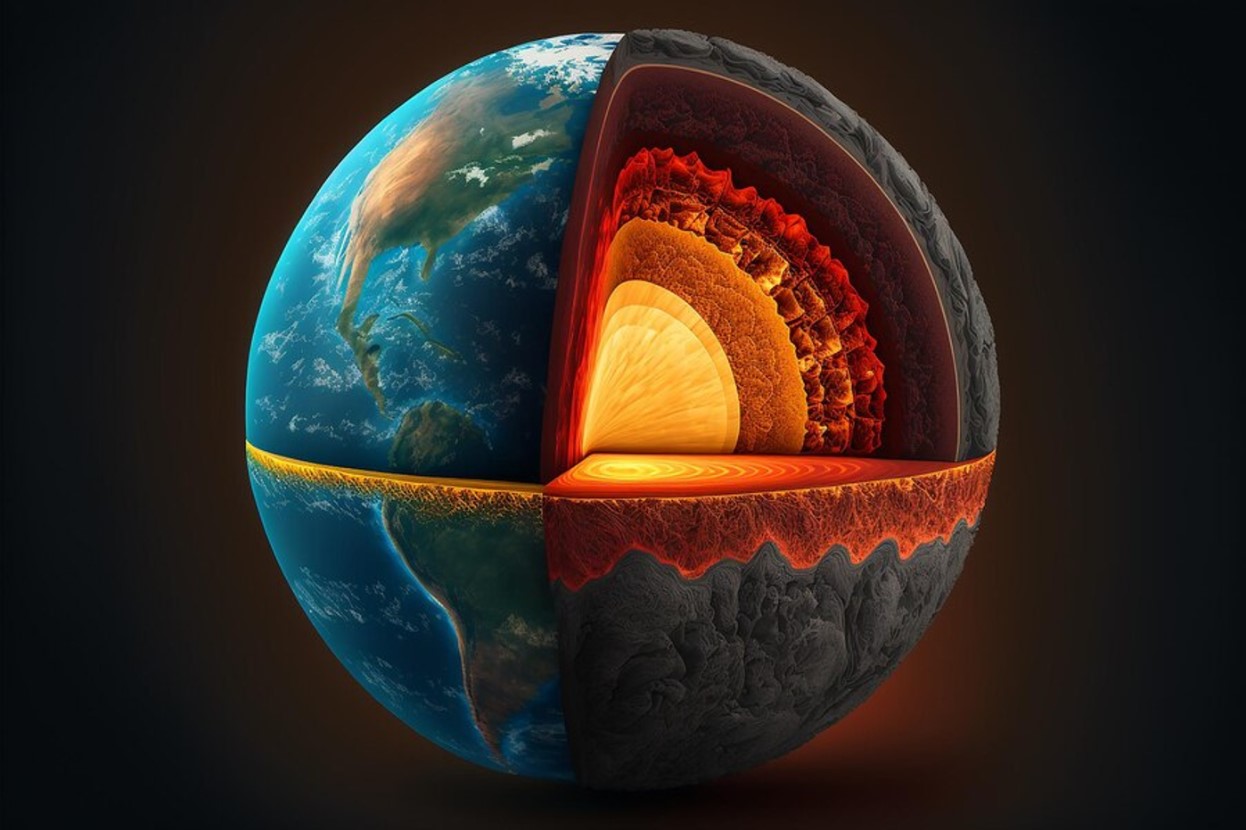Earth’s Inner Core Rotation is Slowing Down – Here’s What That Means for Us
Scientists have discovered that Earth’s inner core has been rotating slower than the surface for nearly 15 years. This slowdown, referred to as “backtracking,” began around 2010.
Researchers from the University of Southern California have published these findings in Nature, sparking curiosity about the potential implications for our planet.
The Surprising Discovery
The initial discovery of the slowdown puzzled researchers. John Vidale, a leading researcher, was taken aback by the seismograms.

Source: Freepik
“When I first saw the seismograms that hinted at this change, I was stumped,” he said. Further observations confirmed the pattern, making it clear that the inner core had indeed slowed down.
Historical Context
This is the first time in nearly 40 years that the core has been moving slower than the Earth’s mantle.

Source: Freepik
The mantle, which lies between the crust and the core, has typically seen the core rotate faster. The new findings mark a significant shift in our understanding of Earth’s internal dynamics.
Methodology and Data Collection
Researchers analyzed seismic data from earthquakes between 1991 and 2023 and nuclear tests conducted by the US, France, and Soviet Union from 1971 to 1974.

Source: Wikimedia
These seismic readings provided a comprehensive dataset that helped researchers track the core’s rotational speed over several decades.
Role of Liquid Iron
The slowdown is attributed to the churning of liquid iron within the Earth’s outer core. This liquid metal is crucial for generating Earth’s magnetic field and influences gravitational interactions with the mantle.

Source: Freepik
Changes in these interactions are likely responsible for the observed slowdown.
Impact on Magnetic Field
The liquid iron in the outer core plays a key role in creating Earth’s magnetic field.

Source: Freepik
Variations in the core’s rotation could potentially affect the strength and behavior of this magnetic field, which protects our planet from harmful solar radiation.
Potential Day Length Changes
One possible outcome of the core’s slowdown is a slight extension of the length of our days.

Source: Eric Rothermel
According to Vidale, our days could be extended by a split second — a seemingly small change with down-to-Earth implications.
The Subtlety of Changes
Vidale notes that the change in day length is almost imperceptible, on the order of a thousandth of a second.

Source: Michal Vavro/Unsplash
This minute alteration is nearly lost amid the “noise” created by the churning oceans and atmosphere, making it a challenge to detect without precise measurements.
Implications for Future Research
The discovery of the core’s slowdown opens new avenues for research. Vidale is optimistic about what future studies might reveal, suggesting that the inner core’s behavior could be more dynamic than previously understood.

Source: Freepik
“The dance of the inner core might be even more lively than we know so far,” he remarked.
Broader Scientific Significance
Understanding the core’s rotation is crucial for comprehending Earth’s overall behavior.

Source: Freepik
These findings contribute to our knowledge of geophysics and can help scientists predict future changes in Earth’s magnetic field and rotational dynamics, which have broader implications for the planet.
Technological Advances in Seismology
The ability to detect such subtle changes in the core’s rotation is an example of the advances in seismology.

Source: Wikimedia
Improved technology and methods have allowed scientists to gather more accurate data, paving the way for discoveries that were previously beyond our reach.
Future Outlook
The slowdown of Earth’s inner core is a fascinating development with potential long-term implications.

Source: Freepik
While the immediate effects on our daily lives may be minimal, this discovery enhances our understanding of Earth’s internal workings and sets the stage for further research into our planet’s complex and dynamic nature.
